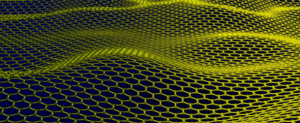
Graphene is the first thermodynamically stable two-dimensional material found in nature. Its properties are extraordinary: from high electrons mobility based on its linear dispersion (Dirac electrons), to strong interaction with the electromagnetic field, high thermal conductivity and high mechanical hardness.
In recent years, research has focused on providing a third dimension in graphene. Recently, three-dimensional graphene materials have been discovered (3D) with micro and nano-porous structures, or consisting of mesoscopic filaments that are distributed over macroscopic length scales. These topological structures help to preserve the extraordinary electrical properties and thermodynamic properties of 2D graphene extending the three-dimensional world.
The porous or filamentous nature, and the high surface / volume ratio of these 3D architectures open up interesting applications and fundamental physics scenarios: from superconductivity, for batteries and supercapacitors uses, flexible electronics, photonics up to infrared and terahertz and plasmonics.
These electromagnetic properties have been studied recently through a collaboration between the IIT @ Sapienza, INFN-LNF and TERALAB laboratory of the Physics Department of La Sapienza [1].
3D nanoporous graphene structures show plasmonic absorption modes modulated by the terahertz region of the electromagnetic spectrum up to the mid-infrared, which have been measured at the Infrared beamline of the Synchrotron laboratory DAFNE Light. These plasmonic modes, which appear as a result of the porous structure of the 3D graphene, maintain the peculiarities dictated by the nature of the Dirac electron 2D graphene moving with high mobility in the highly interconnected structure of the nanoporous graphene. The large surface / volume ratio, the low toxicological impact of graphene and the ability to confine molecules and biomedical materials in conjunction pores with nature “broad band” of the absorptions 3D plasmonic allow to obtain bio-compatible, economic and versatile sensors.
[1] Terahertz and mid-infrared plasmons in three-dimensional nanoporous grapheneF. D’Apuzzo, A. R. Piacenti, F. Giorgianni, M. Autore, M. Cestelli Guidi, A. Marcelli, U. Schade, Y. Ito, M. Chen, and S. Lupi
NATURE COMMUNICATIONS | 8:14885 | DOI: 10.1038/ncomms14885 (2017)
Contacts:
Prof. Stefano Lupi
INFN and Dipartimento di Fisica, Università La Sapienza di Roma
Stefano.lupi@roma1.infn.it
Dr. Mariangela Cestelli-Guidi,
INFN-LNF
Mariangela.CestelliGuidi@lnf.infn.it
 INFN-LNF Laboratori Nazionali di Frascati
INFN-LNF Laboratori Nazionali di Frascati